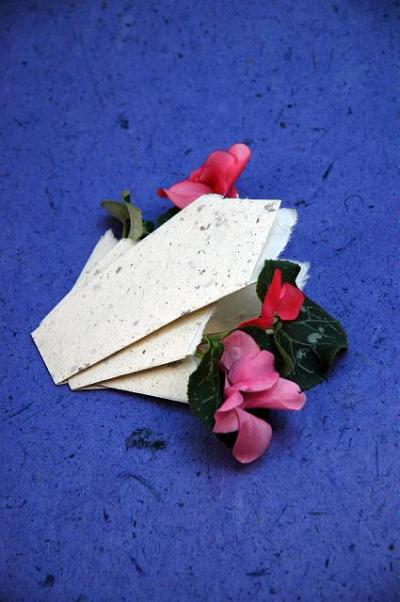Where gift wrapping in the West appears to be a random affair, rules and customs govern the way a product is wrapped in Japan.
Colour and style of wrapping determine the symbolism of the contents. For example, red connotes strong positive emotions whereas pink, orange and red and white together suggest happiness. Paradoxically, white is a common colour for brides…..as well as at funerals. One of my favourite colours, purple, is indicative of privilege, wealth and nobility.
An odd number of pleats in wrapping symbolises joy, while combining two different materials reflects the yin-yang that represent the interconnected and interdependent forces of the natural world. Asymmetry is common and is considered more visually appealing in Japanese culture.
There are two main gift wrapping techniques:
- Tsutsumi or Origata, and
- Furoshiki.
The first method almost exclusively uses paper to wrap packages. The paper – which can be handmade – is never cut, but pleated, folded and tied. It may be simple or complex, but in all cases results in something beautiful to behold.
The aim of this method of wrapping is not to hide the gift, but to enhance its shape and hint at the contents. For example, high quality tea leaves are often given as a present in Japan. When wrapping black tea, red paper inserted in a slit on the top of the package, then overlaid with a film, provides a glimpse into what is inside the package.
Paper wrapping, however, has its downside.
In 1992, Japanese urban residents threw away roughly 37.6 million tonnes of garbage or more than 1.1 kg per head per day, a large part of which was generated by an excessive amount of wrapping. It’s not hard to understand where this is coming from. As an example, gift cartons of biscuits may be individually wrapped inside their boxes, tucked in corrugated papers inside a plastic bag in a tin or box, covered with wrapping paper and then presented in a shopping bag. Basic grocery items like fruits, even single carrots, often come individually wrapped in cellophane.
Furoshiki (which means ‘bath spread’) is a technique of wrapping a gift with fabric. It dates back to feudal times – late 12th to early 17th Century – when this style was used for carrying clothes to the bathhouse. Merchants adopted the style to carry, protect and enhance the appearance of gifts and today furoshiki is popular for birthdays, weddings or everyday shopping.
Due to its flexibility, furoshiki is suited to various shapes and sizes of packages. And because it is cloth based, it can be recycled for future use. This attribute has made it very popular with the Japanese Ministry of Environment which has been keen to find creative ways of tackling the mountains of waste arising from used wrapping.
The magnitude of the problem – and the opportunity to solve it – are demonstrated thus: using a furoshiki instead of a 10-gram polyethylene plastic bag prevents 61 grams of carbon dioxide from being emitted into the atmosphere, making the reusable furoshiki a winner in the battle against climate change. Apart from its wrapping function, furoshiki cloths also have decorative qualities and can be used as wall hangings or cushion covers.
Notwithstanding these laudable attributes, furoshiki wrapping is not yet a common sight in Japan. However, it appears to be gaining some traction with younger people for whom both environmental and fashion considerations are important.[1]
At various points along the way, we put the passion for gift wrapping to the test.
Beneath this wrapping lies a humble packet of sweets.
The contents of this pretty plastic bag….
……include a small foil sachet of bouillon, a metal container into which the bouillon can be decanted and the vendor’s business card.
I don’t often walk past the chocolate counter without at least eyeballing the display. This box of chocolates was wrapped in a single sheet of paper with several folds, secured with a piece of sticky tape…..
…..then dropped into this carry bag.
All this wrapping for a $5 box of chocolates?? Is it really worth it? Do the chocolates, packet of sweets and bouillon taste any different for having been presented in this way?
While green shoots may be appearing in the bid to drive down environmental waste from wrappings, from our brief observations Japan still has a long way to go.
© AJapaneseDiary, 2013 ongoing. Unauthorised use and/or duplication of this material without the express and written permission of this blog’s author and owner is strictly forbidden. Excerpts and links may be used, provided that full and clear credit is given, and with appropriate and specific direction to the original content.








Thanks. Had no idea of the subtleties of wrapping.
Neither did I until I looked into it a little more closely!